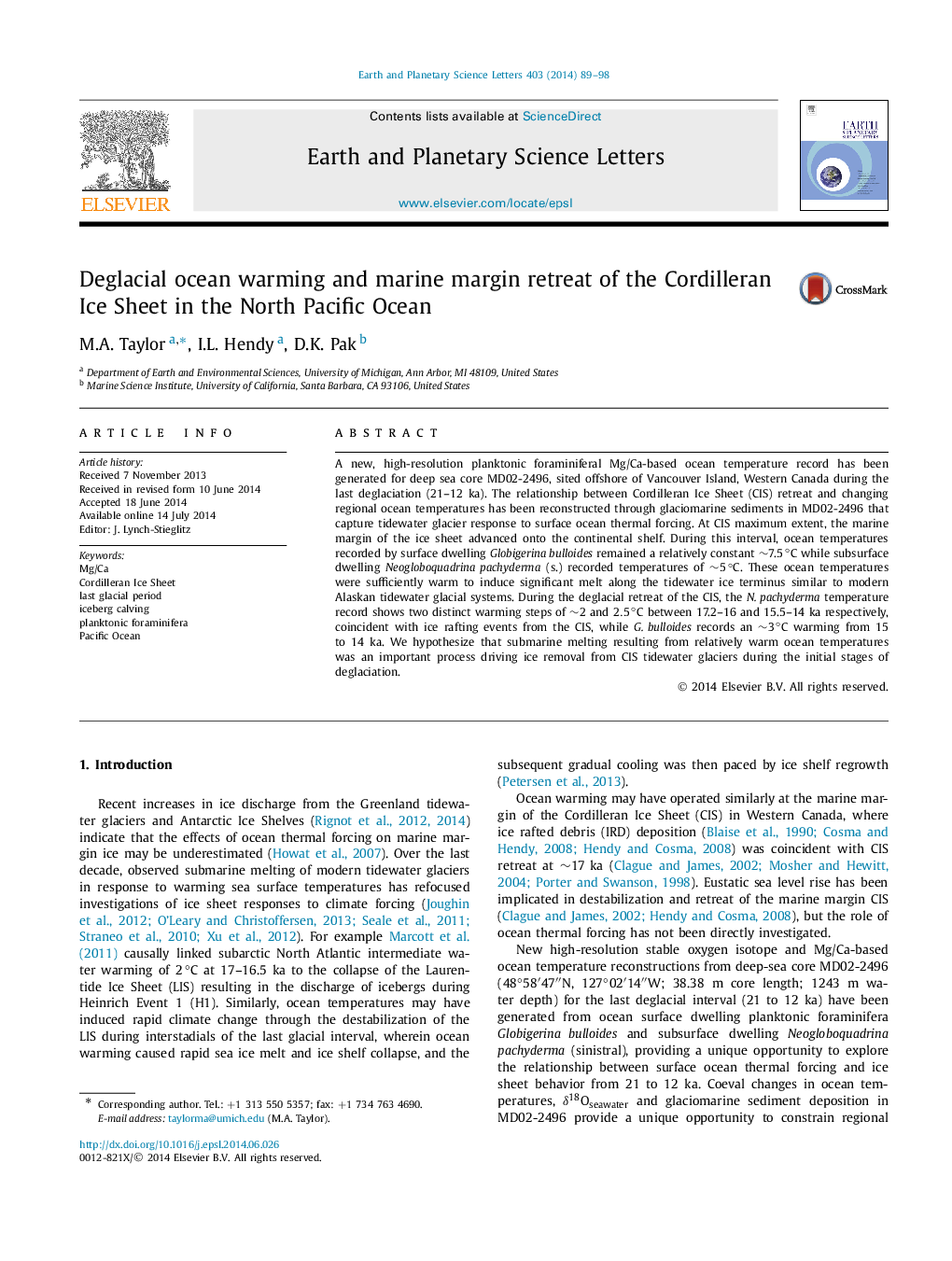| Article ID | Journal | Published Year | Pages | File Type |
|---|---|---|---|---|
| 6429089 | Earth and Planetary Science Letters | 2014 | 10 Pages |
•We present a high-resolution deglacial ocean temperature record offshore Vancouver Island.•Ice rafted debris coincides with ocean warming of 2 °C at 17 and 14.8 ka.•We hypothesize that warm surface ocean temperatures induced significant melt on the marine margin of the CIS.•Submarine melting may have been the mechanism for rapid ice removal.
A new, high-resolution planktonic foraminiferal Mg/Ca-based ocean temperature record has been generated for deep sea core MD02-2496, sited offshore of Vancouver Island, Western Canada during the last deglaciation (21–12 ka). The relationship between Cordilleran Ice Sheet (CIS) retreat and changing regional ocean temperatures has been reconstructed through glaciomarine sediments in MD02-2496 that capture tidewater glacier response to surface ocean thermal forcing. At CIS maximum extent, the marine margin of the ice sheet advanced onto the continental shelf. During this interval, ocean temperatures recorded by surface dwelling Globigerina bulloides remained a relatively constant ∼7.5 °C while subsurface dwelling Neogloboquadrina pachyderma (s.) recorded temperatures of ∼5 °C. These ocean temperatures were sufficiently warm to induce significant melt along the tidewater ice terminus similar to modern Alaskan tidewater glacial systems. During the deglacial retreat of the CIS, the N. pachyderma temperature record shows two distinct warming steps of ∼2 and 2.5°C between 17.2–16 and 15.5–14 ka respectively, coincident with ice rafting events from the CIS, while G. bulloides records an ∼3°C warming from 15 to 14 ka. We hypothesize that submarine melting resulting from relatively warm ocean temperatures was an important process driving ice removal from CIS tidewater glaciers during the initial stages of deglaciation.
